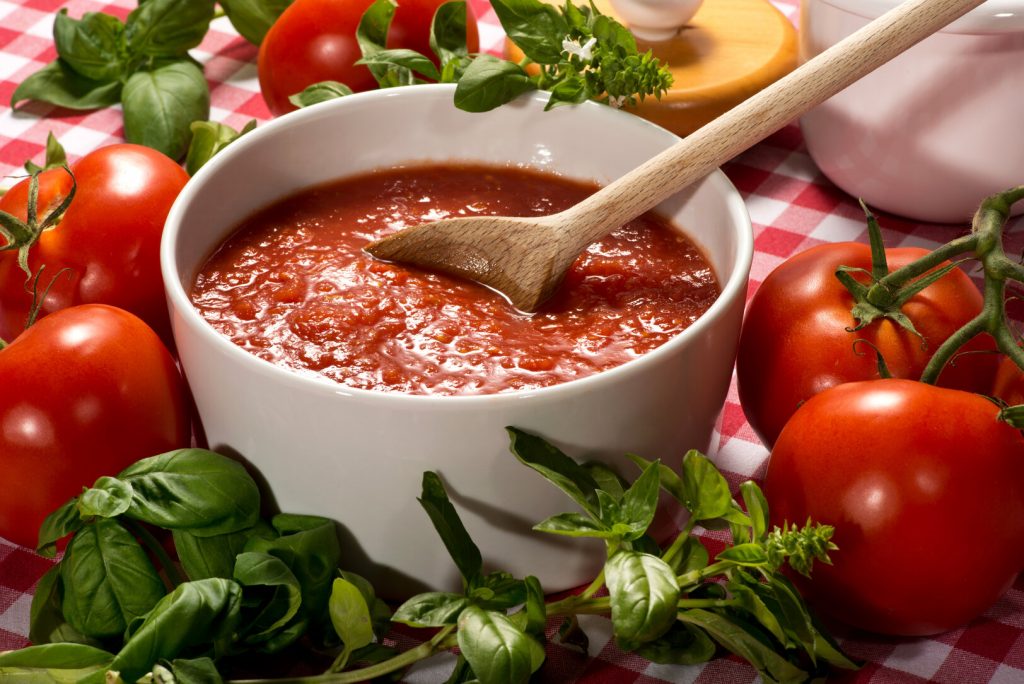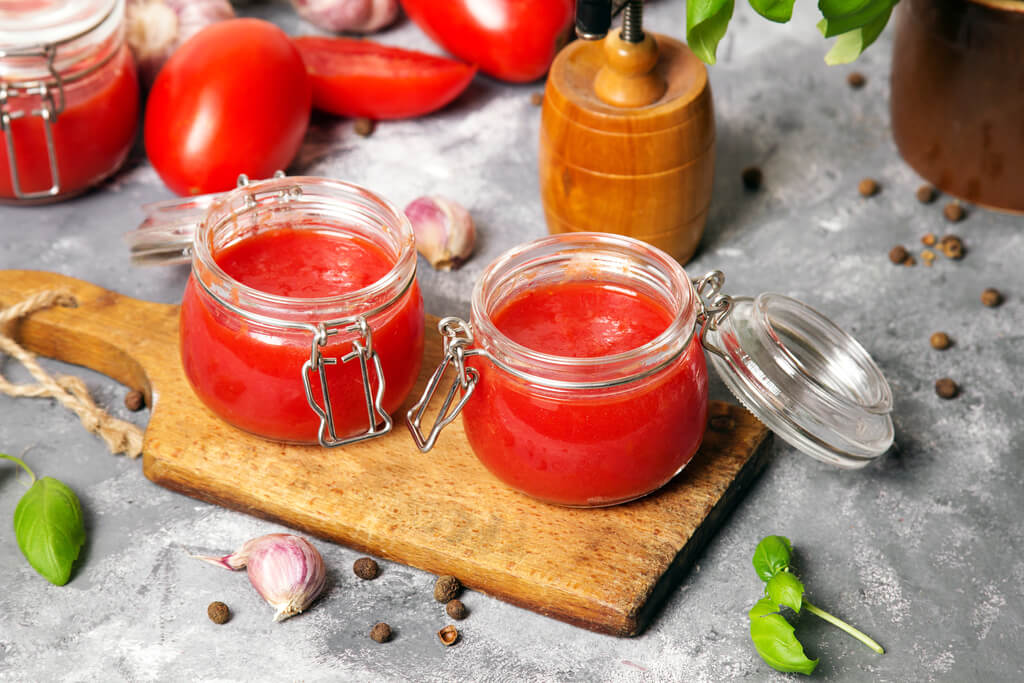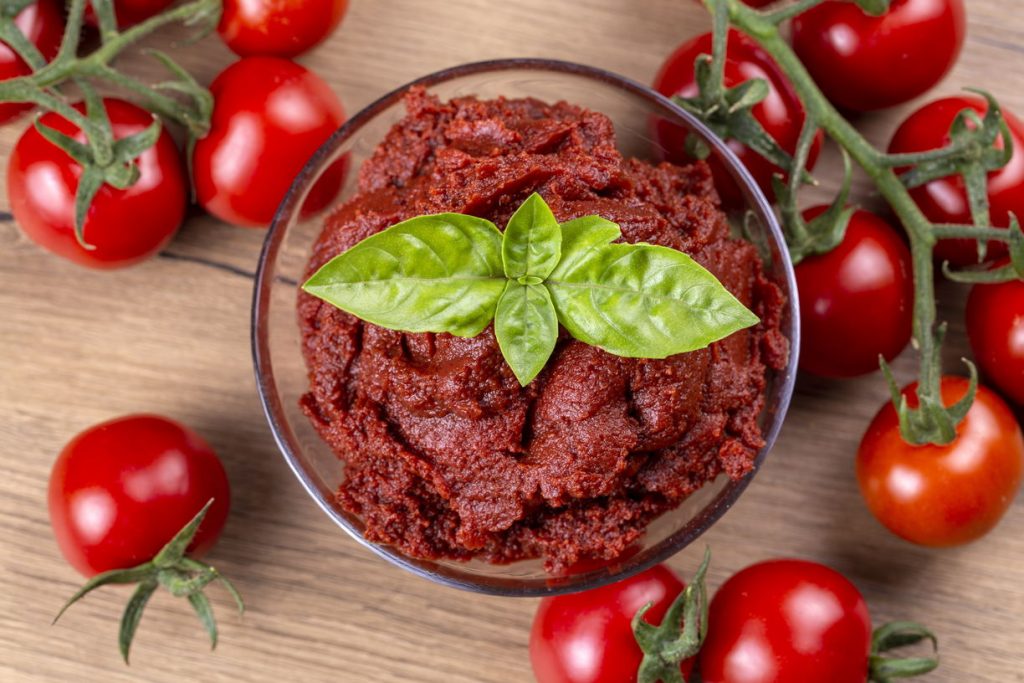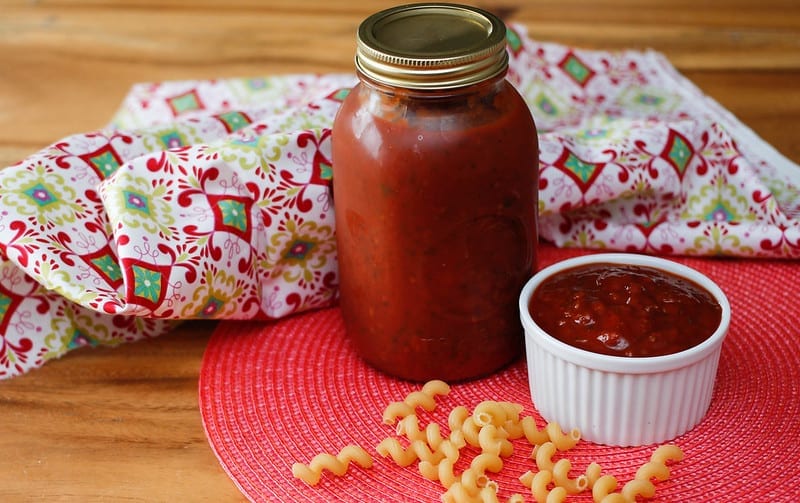
As they’re almost identical, cans of tomato puree and paste can easily fool you if you’re not careful. A glance at these two, sitting side by side at the grocery aisle, will probably make you wonder what their differences are. So to help you in this ingredient dilemma, we’re breaking down the intricacies between these staple Italian cuisine ingredients in this tomato puree vs. paste article.
And while we’re at it, we will also shed light on another similar ingredient—tomato sauce. Keep on reading and learn the distinctions regarding their flavors, uses, prices, and process.
What Is Tomato Puree?

Before anything else, what exactly is tomato puree? This liquid sauce is made using cooked and strained tomatoes. To add, it usually comes from the firm, ripe, and red variants that are lightly boiled and quickly blended for a velvety and rich finish.
READ ALSO: 9 Best Tomato Puree Substitute Options to Save Your Dishes
What Is Tomato Paste?

Meanwhile, tomato paste is a well-concentrated tomato sauce. It has a thicker and more intense flavor as it’s cooked for several hours. After the reduced ingredient is strained, it’s again boiled until it reaches a heavy and stiff consistency.
READ ALSO: 5 Tomato Paste Substitute Options Already in Your Kitchen
Tomato Puree vs. Paste: Their Differences
Despite the confusion, it’s actually easy to spot what makes the two distinct from one another. But to avoid making a rookie mistake, here’s an in-depth analysis of tomato puree vs. paste!
How They’re Made and Their Consistency
Silky and smooth, tomato puree has a rich consistency thanks to a food mill, blender, or food processor. But before a certain consistency is achieved, this versatile sauce starts as fresh tomatoes boiled for 15 to 30 minutes, letting its juices provide the flavor and almost-runny texture. Then, it is set to cool down and quickly pureed for a velvety consistency. But for a thinner one, leftover skin and seeds are strained.
Tomato paste, on the other hand, is thicker and denser as it’s cooked for a long time and simmered twice until it reduces to almost half its original amount. Some cook the paste for two hours while others like to cook it for up to five hours. It can come out super thick, so it’s up to you if you want to thin it out with a little water. You can also dry it out under the sun after straining instead of boiling it for the second time.
Uses in Cooking
There are tons of dishes where you can use tomato puree. Packed with tangy notes, this fine ingredient adds scrumptious hints to soup, salsa, and stews just like in lamb bhuna. The Indian dish combines canned tomatoes, warm spices, and puree for a rich and flavorful sauce. In addition, you can also make soup out of this tomato-based ingredient using broth, spices, and milk.
On the other hand, every spoonful of tomato sauce adds magic to your recipes. Most home cooks mix in a dollop of this ingredient to soup, sauce, and stews to enrich the flavor or make it thicker. For example, it lends a tangy taste to your beloved pizza by giving it the perfect zing through the pizza sauce. This heavy sauce gives the famous Italian dish a refreshing taste complementing perfectly with salty cheese. Aside from that, you can throw it in marinades too for hints of tomatoes.
Taste
With its preparation and cooking time, tomato paste wins the taste category if you’re looking for richer and more intense flavors. The drying and the hours spent over heat gives it similar notes to dried tomatoes.
On the other hand, if you’re wary of acidity, then tomato puree is your match. It has a milder finish than the paste. In addition, puree also has a fresh tomato taste.
Price
Depending on the brand and amount, a 29-ounce can of tomato puree ranges between USD 1.66 to 2.00. Meanwhile, a 24-ounce jar of paste costs USD 8.45 to 10.00. It’s easy to understand why the latter is more expensive as it requires longer cooking hours. Plus, making it involves more steps and more tomatoes.
Tomato Puree and Tomato Paste vs. Tomato Sauce

Flickr | Marco Verch Professional Photographer
Another tomato product that you might get confused with is tomato sauce. Although the three come from the same fruit, they all have differences in consistency, flavor, and production.
Tomato Puree vs. Tomato Sauce
In this section, you’ll discover huge differences between puree and sauce. Tomato puree is thin, but tomato sauce has an ever thinner consistency. The former also either comes from canned, fresh, or peeled tomatoes while the latter needs peeled or fresh ones. Plus, tomato sauce is more flavorful than tomato puree as it contains spices and seasonings.
Tomato Paste vs. Tomato Sauce
For this tomato condiments battle, it’s easier to spot the distinctions between paste and sauce. The paste has a thicker texture and takes more time to make. Meanwhile, among the three tomato products, the sauce has the thinnest consistency and can be made in just 30 minutes. The paste is a highly concentrated form of puree, while the tomato sauce is a puree that has added flavors.
Substituting Tomato Puree and Tomato Paste
Now, are you wondering if you can substitute tomato paste for tomato puree? The answer, yes. All you need are ¼ to ⅓ cup of paste and ¾ cup of water in place of 1 cup of puree.
Meanwhile, if you’re out of tomato paste, you can also use tomato puree as an alternative. You can start by measuring two to three tablespoons of puree in place of one tablespoon of paste. Cook the substitute until thick to achieve the deep flavor.
The variety of tomato products in the grocery store can be intimidating. But knowing the differences and being aware of their uses makes the battle of tomato puree vs. paste clearer. So if you’ve reached this point, we think you’re ready to wander the canned goods aisle!











